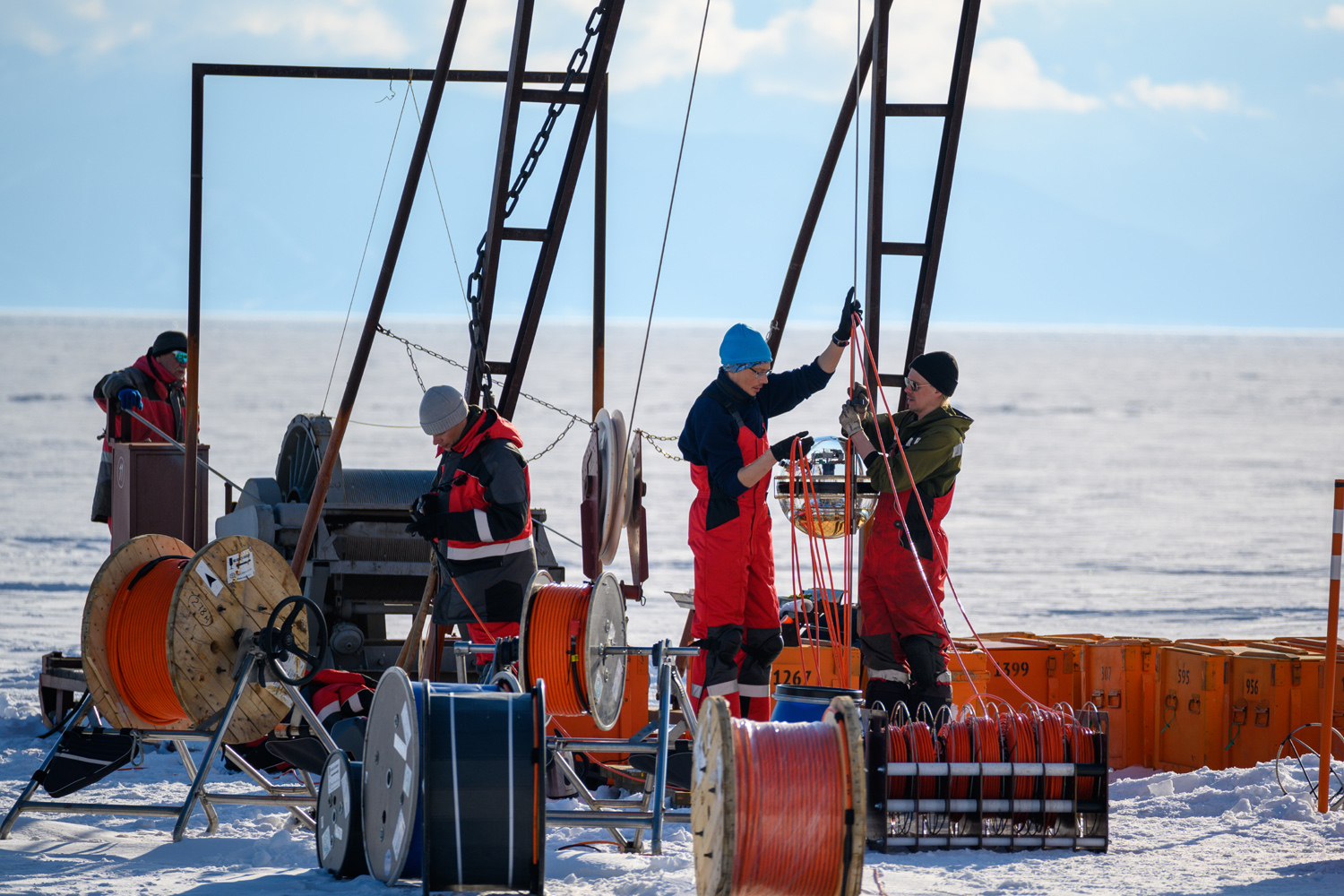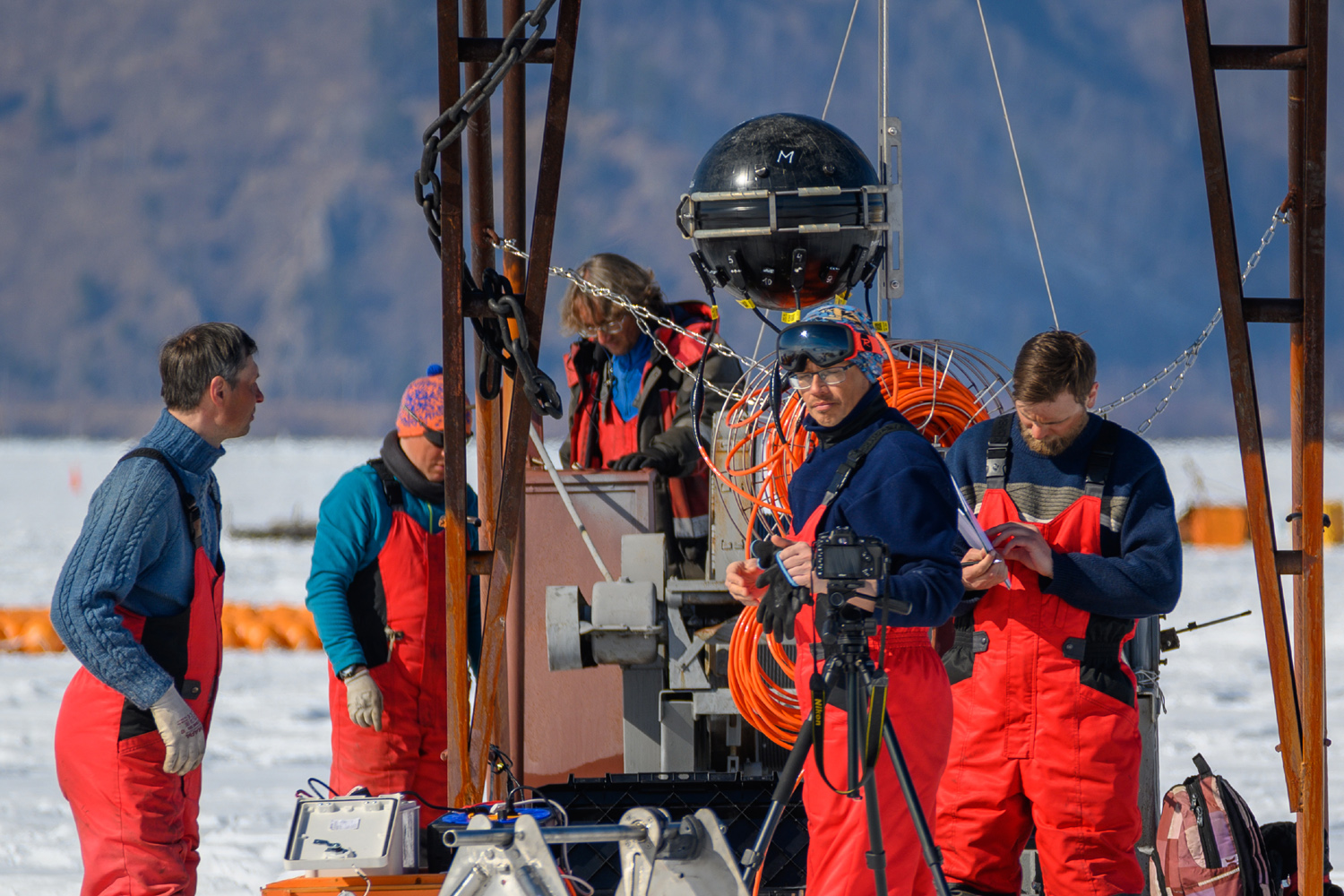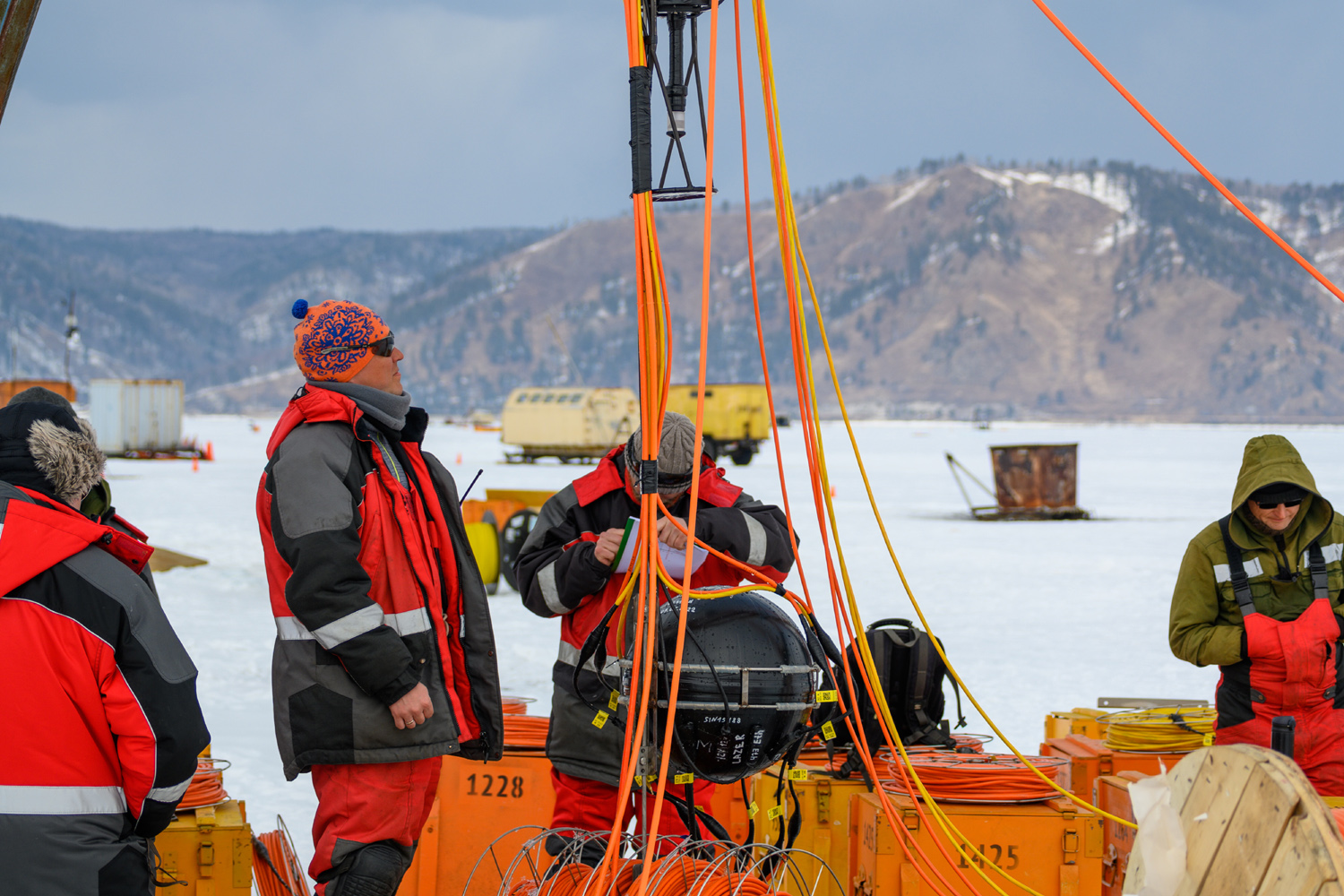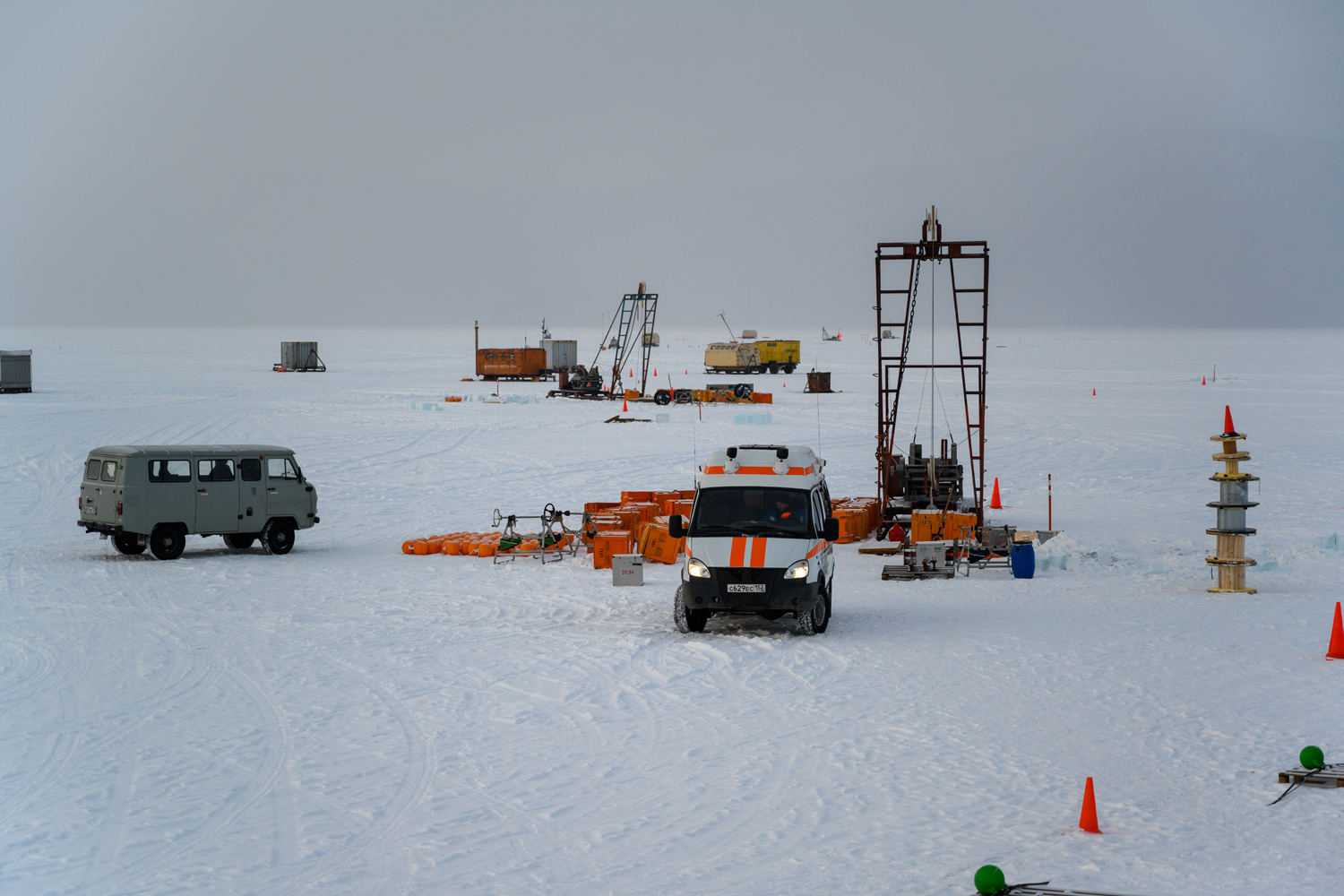Regular Baikal expedition concluded
Media, 22 April 2022
Regular Baikal expedition to construct the Baikal-GVD, a cubic-kilometre deep underwater neutrino telescope, completed.
During the 2022 winter expedition, the Baikal-GVD collaboration has deployed two new clusters of the telescope, repaired, and upgraded detector elements already installed, and proceeded with developing the optical data transmission system within the facility.
The Baikal-GVD Neutrino Telescope is aimed at detecting and studying ultra-high-energy neutrino fluxes from astrophysical sources. Using it, scientists plan to scrutinize not only processes with huge energy release that occurred in the distant past but also the evolution of galaxies, formation of supermassive black holes and mechanisms of particle acceleration.
The Baikal Neutrino Telescope is a neutrino detector located in Lake Baikal 3.6 km away from the shore, at a depth of about 1300 m. This unique scientific facility is an important tool of multimessenger astronomy, a new powerful method to investigate the Universe. Baikal-GVD is one of the three neutrino telescopes across the world and, along with IceCube at the South Pole and ANTARES (now KM3NeT) in the Mediterranean Sea, is part of the Global Neutrino Network (GNN).
The Baikal-GVD telescope is the largest in the Northern Hemisphere and the second in size in the world. To date, 10 clusters are put into operation. They are spaced 250―300 m away from each other. Since 12 April 2022, they have been taking data. One cluster is a detector per se containing 8 vertical strings with optical modules (36 spheres on a string). At present, the telescope comprises 3000 such photodetectors. The project volume of one cubic km is intended to be achieved by 2027.
“This year our most optimistic plans were accomplished,” remarks Igor Belolaptikov, the Head of Expedition Management, a researcher of the Dzhelepov Laboratory of Nuclear Problems of the Joint Institute for Nuclear Research.
“The overall scope of works performed during this year’s expedition significantly exceeds the average level of last years and evidences both the increased expertise of the expedition team and the quality of preparation of technical facilities and scientific equipment. Well, Lake Baikal didn’t let us down either: the ice cover in the ice camp area was an ideal supporting platform for mounting,” says Grigory Vladimirovich Domogatsky, the Head of the Collaboration, a corresponding member of RAS, the Head of the Laboratory of High-Energy Neutrino Astrophysics of the Institute for Nuclear Research of RAS.
The Baikal-GVD Neutrino Telescope is being constructed by concerted efforts of the international collaboration with the leading role of the Institute for Nuclear Research of the Russian Academy of Sciences (INR of RAS) (Moscow), the founder of this experiment and the direction “high-energy neutrino astronomy” in the world, and of the Joint Institute for Nuclear Research (JINR) (Dubna). More than 70 scientists and engineers from 11 science centres of Russia, Germany, Poland, the Czech Republic, Slovakia and Kazakhstan are involved in the project.
The 2022 expedition is organized by the Institute for Nuclear Research of the Russian Academy of Sciences (INR of RAS) (Moscow) and the Joint Institute for Nuclear Research (JINR) (Dubna).





